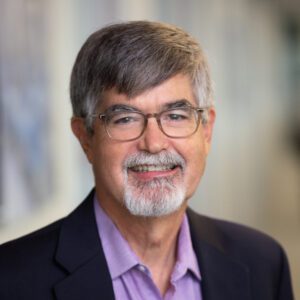Taking Water Reuse Mainstream to Help Parched Supplies
When David Sloan, PE, BCEE, first took an interest in the prospects for reusing treated wastewater to supplement water supplies, widespread consideration of this option appeared to be far on the horizon.
But the landscape has transformed over the past few decades. Booming growth, advances in treatment technology, and more cost-competitive solutions have brought reclaimed water into the mainstream of water planning.

As the industry has changed, David has become a nationally recognized leader in direct potable reuse and led groundbreaking Freese and Nichols water resources work to help parched communities diversify their water supplies. And as current president of the nonprofit WateReuse Texas, he is working to expand resources for utilities keen on exploring how reuse can nourish their strained systems.
“Reuse on one level is a pretty easy sell in Texas: We need water. We’re growing, but water supplies aren’t growing,” David said.
“Some entities have been adopting reuse for a long time, but there’s new interest. We’re trying to make resources available so they can better investigate these opportunities and see what really works for them.”
While Texas’ robust state water planning structure encourages regions to consider reuse as an option as they prepare for next 50 years, David said communities don’t always know how to turn their water reuse ambitions into real projects.
“I want it to be easier for communities to find out what others are doing, to find out who they could talk to and compare stories to see what approach might fit them best.”
Innovations to Expand Water Supplies
A treatment technologist for more than 40 years, David has led Freese and Nichols’ treatment teams in developing reuse expertise since the early days when treated effluent was primarily considered for industrial cooling and irrigation, such as for watering golf courses. He was based in North Texas for many years and now is a member of the Treatment, Transmission & Utilities group in Austin.
In the 1990s, communities in persistently dry regions, such as the Rio Grande Valley and West Texas, started exploring broader reuse applications. In the 2000s, Freese and Nichols’ treatment, transmission, geotechnical and facilities engineers — and environmental scientists and construction managers — helped the Colorado River Municipal Water District develop its Raw Water Production Facility. The first facility in North America to blend reclaimed water directly in a raw water distribution pipeline, it diverts up to 2 million gallons per day of wastewater effluent that would otherwise be discharged to a local creek and treats it to a quality expected of bottled water. This provides a sustainable water supply and drought resilience for CRMWD member cities Big Spring, Snyder, Odessa and Midland.
A Changing Reuse Landscape
Alternative water supplies that include reuse have continued to expand, supported by grants and loans from the Texas Water Development Board. According to TWDB, examples include San Antonio augmenting the stream flow along the River Walk with reclaimed water, multiple cities irrigating golf courses and landscapes with reuse water, and El Paso replenishing Hueco Bolson Aquifer by re-injecting reclaimed water through injection wells and infiltration basins.
Nationally, regulatory approaches to reuse vary widely, David said. Florida, for example, requires that most wastewater be converted for beneficial use, with discharges allowed only as required for environmental flows. Some states, such as Colorado and Arizona, have been building regulations for potable reuse projects. In Texas, reuse advocates have worked with regulators to show how reuse projects can apply existing technology, thus avoiding new restrictions that could stymie momentum, he said.
Continuing to expand acceptance for reuse requires public education and a shift in mindset, said David Jackson, Freese and Nichols’ Water/Wastewater Treatment Practice Leader: “We need to be thinking of every drop of water as valuable. We judge water based on where it came from; we need to judge it based on its quality.”
Technology advances have improved the ability to monitor treatment and measure removal of contaminants, and manufacturing efficiencies have reduced the costs of the technology, he said. While purifying wastewater to drinking-water standards remains expensive, it has become more cost-competitive with other new drinking water sources.
The public also is becoming more tolerant of reuse as a sustainable supplement for drinking water supplies, especially where booming populations require unconventional approaches.
Industry Leadership
In addition to pioneering work on potable water reuse, David has produced articles, presentations and feasibility studies that guide other professionals in applying reuse principles. In 2020, he received the Alan Plummer Environmental Sustainability Award from the Water Environment Association of Texas recognizing his contribution to reuse applications and science.
His two-year term as president of WateReuse Texas lasts into September. He also sits on the board of the national WateReuse Association and the national water reuse committees for the Water Environment Federation and the American Water Works Association.
“For over 130 years, Freese and Nichols has focused on purifying safe drinking water and providing clean effluent from municipal wastewater for clients all across the Southeastern U.S.,” David Jackson said.
“David Sloan has been a pioneer in the engineering of water purification processes for potable reuse over the last two decades, having led the design of the first operating DPR application on the North American continent. He continues to make substantial contributions to the science of safe water reuse for our clients and our industry. We are blessed to have him on our team.”

